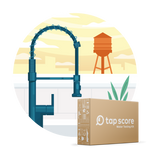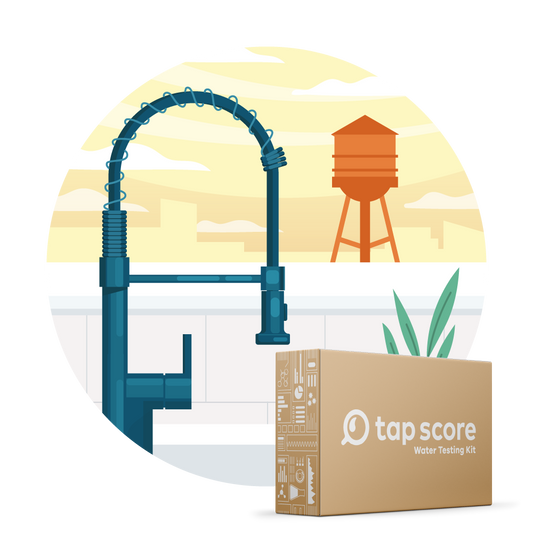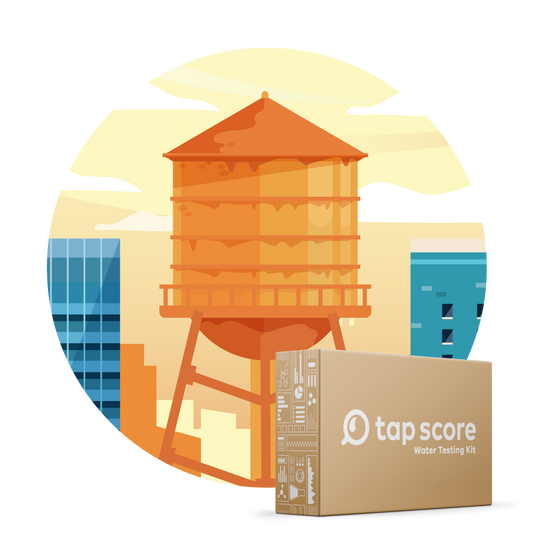
What Is a Consumer Confidence Report (CCR)?
Our blog is written by real experts— not AI. Each guide is carefully reviewed and updated based on the latest research. Plus, with no affiliate links, you can count on unbiased insights you can trust.
If you’ve been suspicious about the smell, look or even taste of your utility’s tap water, you might want to consider a Consumer Confidence Report (CCR) to start finding answers.[1] But what is a CCR and how can you access one? We’ll answer all that and more below.
Table of Contents:
- What Is a CCR?
- How Can I Receive One?
- What Does a CCR Tell Me?
- Interpreting a CCR
- What to Do About Concerns
- Tap Score's City Water Project
What Is a Consumer Confidence Report?
Simply put, a CCR is a water quality report. According to the U.S. Environmental Protection Agency (EPA) the purpose of these reports is to improve public health protection and provide information so that water consumers can make educated decisions regarding[2]:
- Drinking water quality
- Drinking water treatment
- Drinking water supply management
How Can I Receive My Consumer Confidence Report?
Everyone who sources their water from a community water system (often called a utility) is entitled to an annual Consumer Confidence Report. City Water Project (BETA) is making CCRs available for people in every town and city across the United States. Otherwise, access to your CCR depends on your living situation.
- If you live in a house:
- You will most likely receive a copy of your CCR automatically through the mail from your local water utility each year.
- If you live in a condominium or apartment:
- If you are not responsible for your water bill, you might not receive a copy of your CCR directly to your mailbox. You can still access your water quality reports by contacting your building manager, calling your local water provider, or looking it up through your community water system’s website. If your community water system does not have a website, try searching for your area on the Safe Drinking Water Information System (SDWIS), or try calling them or your local water district.[3]
- If you get your water from a non-community water system but not a private well (i.e. a facility with its own water system or a system that provides water in a specific place like a campground or mobile home park):
- You may need to contact a building manager or administrator. You can also search for your area on the SDWIS.
Note: CCR’s are only available if you are on a community water system. People who receive their water from a private well do not receive CCRs, as private wells are not regulated by the EPA. If you are on a private groundwater well and would like more information, we recommend taking a look at the Center For Disease Control’s Private Groundwater Wells page.[4]
What Does a Consumer Confidence Report Tell You?
At first glance, CCRs can appear quite technical. But once you know what to look for, you can find a wealth of valuable information. All Consumer Confidence Reports are required to contain certain key pieces of information regarding:
- Your source water
- Definitions of water-related acronyms
- Detected contaminants, their sources, and health effects
- Monitoring of Cryptosporidium, Radon, and other contaminants—if detected
- Compliance with drinking water regulations
- Educational information and resources
All data on your CCR will be tailored to your local water utility.
Interpreting a Consumer Confidence Report
Here’s a sample CCR (courtesy of the National Science Foundation):[5]

What Does All of This Mean?
You can interpret each column of the CCR as the following:
Column 1: The contaminant evaluated (e.g. Barium)
Column 2: The Maximum Contaminant Level (MCL) for the specified contaminant
Column 3: The Maximum Contaminant Level Goals for the specified contaminant (set by the EPA)
Column 4: The average concentration of the specified contaminant detected in your water
Column 5: The range of concentrations of the specified contaminant detected in your water (from multiple samples taken)
Column 6: Whether or not the concentration in your water violates the MCL
Column 7: A short explanation of the contaminant’s natural origins
Column 8: A short overview of the contaminant’s related health effects
What To Do If You Are Concerned About Your Consumer Confidence Report
Unfortunately, Consumer Confidence Reports may reveal some troubling news about the state of your water system, like chemicals or other contaminants present in your area. This could leave you feeling confused or concerned—and rightfully so!
Nevertheless, if you are concerned about the content of your CCR, you have options. Along with calling your local water utility directly, some resources include:
- The EPA’s CCR Finder tool [6]
- The EPA’s CCR Frequent Questions page.[7] This is a good resource if you have general questions.
- The EPA’s Safe Drinking Water Hotline (1-800-426-4791) can also provide answers.[8]
Reminder: CCRs are not tap-specific. They only provide an average of water quality leaving the treatment plant. A lot can change when you factor in the state of your or your community’s plumbing infrastructure.
Advanced City Water Test
Ideal baseline for testing tap water provided by a local water utility–including metals, minerals, and chlorine-related byproducts.
City Water Project
Consumer Confidence Reports are not perfect:
- They show only a limited number of contaminants
- They are largely performed by the water utility at the treatment plant
- They do not represent water quality in your home
- They are often difficult to find
- They are often complicated to read and understand
- At best, they show only LAST YEAR’s water quality
For these reasons, Tap Score has the City Water Project to give people a more timely and informative alternative to their CCR.
On City Water Project, not only can you find your utility’s CCR, but you can see all the data in higher resolution along with more detail and information about each contaminant detected in your neighborhood.
Tap Score’s home testing kits are also a great resource if your questions were not sufficiently addressed by your CCR. Tap Score’s laboratory services can test for over 400 contaminants and will provide you with cutting edge water health analysis and unbiased treatment recommendations.
Read More
▾The Ultimate Tap Water Odor Guide
The Ultimate Guide to Discolored Tap Water
The Drinking Water Taste Guide
What Is The Difference Between MCLG and MCL?
7 Pathogens That Contaminate Drinking Water
Sources and References
▾- Safe Drinking Water Act: Consumer Confidence Reports (CCR) | US EPA
- Consumer Confidence Report Rule: A Quick Reference Guide | US EPA
- SDWIS Search | US EPA
- Private Wells Home | Private Water Systems | Drinking Water | Healthy Water | CDC
- Consumer Resources & Drinking Water
- Consumer Confidence Reports Finder (CCR)
- CCR Information for Consumers | US EPA
- EPA Hotlines







